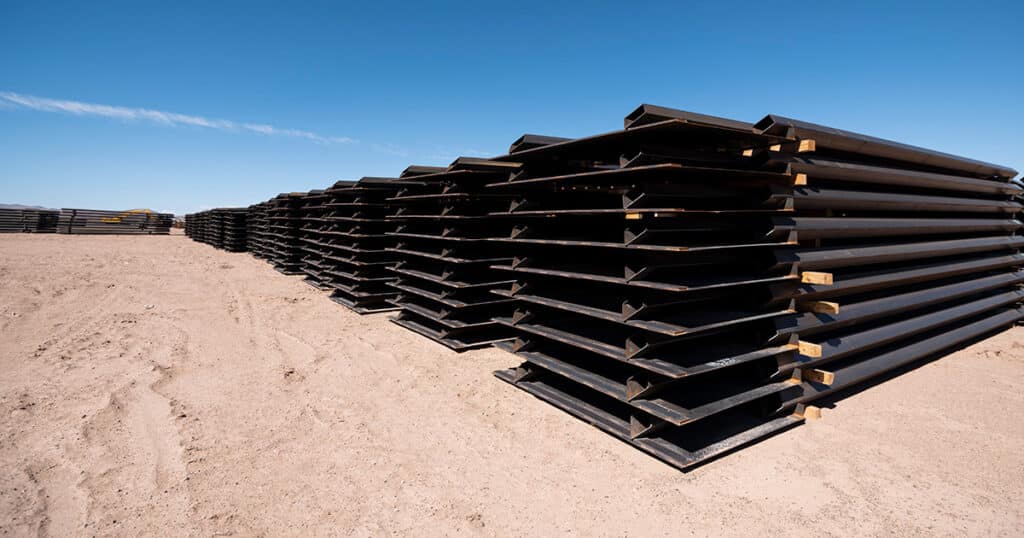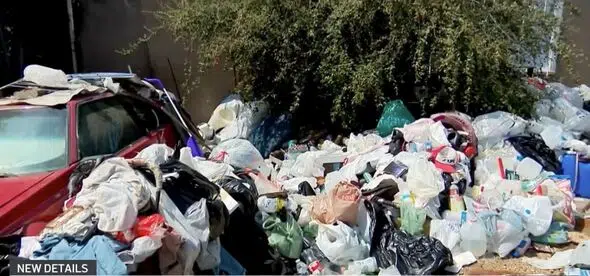
Unused Wall Materials Have Sat ‘on Border for Over 2 Years’ on Family’s New Mexico Ranch, Hill Panels Are Told
Unused border wall materials are still sitting on Russell Johnson’s family ranch in New Mexico near the border with Mexico.
“This material has been sitting on the border for over two years,” Johnson told members of Congress at a hearing Tuesday. “Taxpayer dollars are being stockpiled, rather than being utilized for their intended purpose.”
Johnson’s family has owned a ranch on America’s southern border in New Mexico since 1918. During two House Homeland Security subcommittees’ joint hearing focused on the implications of President Joe Biden‘s decision to halt construction on the southern border wall, Johnson told lawmakers that his family has been dealing with issues at the southern border for years.
“My dad and my uncle had a pickup stolen from them at gunpoint by young men who had been guarding a drug field in Mexico,” Johnson said.
“Cattle thieves have crossed into the United States to steal our cattle,” he continued, adding that “illegal immigrants have caused property damage, left trash, and broken into the homes of several of my family members.”
In April of 2020, Johnson says, a new “sense of security and relief from an open border” was in sight.
Plans were underway by the Trump administration to replace barbed wire fencing and a “Normandy barrier” with “a 30-foot tall, concrete reinforced steel barrier with stadium style lighting and sensor technology to provide agents real time data on attempted crossings,” said Johnson, himself a former Border Patrol agent.
But construction of the border wall came to a halt in January 2021 when Biden issued a presidential proclamation declaring that “building a massive wall that spans the entire southern border is not a serious policy solution,” calling construction of a border wall “a waste of money.”
“It shall be the policy of my Administration that no more American taxpayer dollars be diverted to construct a border wall,” the then-new president said.
Biden’s decision left “a three-quarter mile gap, one border monument access gate that hadn’t been installed and a few miles of wall that had not been filled with concrete or welded together,” Johnson told the hearing. Because the wall protecting Johnson’s ranch is on the Roosevelt Reservation, land owned by the government, the federal government never provided his family with construction updates or details, he said.
Johnson’s family holds a grazing lease on New Mexico land owned by the federal Bureau of Land Management, but when construction of the wall stopped, wall panels and “two areas of massive piles of gravel and rock” and were left on the land, rendering section of the property unusable.
“Contractors are now telling my family that these wall panels are going to be hauled off for scrap,” Johnson said. “If anyone ran their businesses as inefficiently as the federal government has handled this project since the shutdown, they would all be broke.”
The illegal aliens crossing the border near Johnson’s ranch wear camouflage and do not want to be detected by Border Patrol, Johnson said.
“It literally looks like a military invasion,” he told Rep. Dan Bishop, R-N.C., when the congressman asked him to elaborate on the description.
Johnson said the pattern of men crossing the border near his home illegally in camouflage began about eight years ago.
“Whose responsibility is it to protect you from that?” Bishop asked Johnson.
“Last I thought it was the United States government,” he replied.
The joint hearing by the Subcommittee on Border Security and Enforcement and the Subcommittee on Oversight, Investigations and Accountability questioned two panels of witnesses on the effectiveness of border walls as a deterrent to illegal immigration during the course of the hearing.
“Barriers are most effective when used as part of a border barrier system,” Ntina Cooper, acting deputy executive assistant commissioner for Enterprise Services at Customs and Border Protection, told the members of Congress.
An effective border wall system “incorporates other critical attributes, including surveillance and detection technology to provide domain awareness and roads and lighting, to provide Border Patrol agents with improved access, mobility and visibility,” Cooper said.
On Wednesday, the House Homeland Security Committee will hold a full committee hearing on Department of Homeland Security “Secretary [Alejandro] Mayorkas’ Loss of Operational Control to Drug Cartels.” The border crisis hearings are part of an ongoing investigation by Homeland Security Chairman Rep. Mark Green, R-Tenn., into the border crisis and the failure of Biden administration to secure the border.



